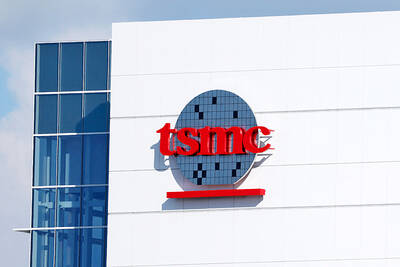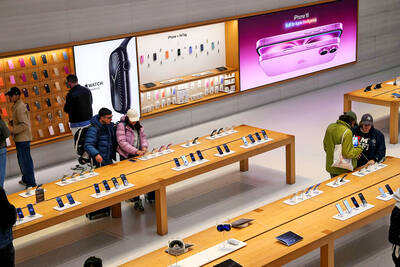Copenhagen Infrastructure Partners (CIP) yesterday urged the government to keep next year’s purchasing price for offshore wind energy at current levels to reflect higher risk hedging costs.
The Ministry of Economic Affairs is expected to publish its proposed offshore wind energy purchase price before the end of this month and finalize its decision in December.
CIP urged the government to maintain this year’s price of NT$5.8 (US$0.19) per kilowatt-hour, as further cuts would stifle the nation’s efforts to create a homegrown industry to harness offshore wind energy, CI Wind Power Development (Taiwan) Co chief financial officer Keith Hsu (徐正穎) said at a media gathering.
A reasonable price would ensure that offshore wind farm developers have enough time to build a local supply chain and meet the government’s renewable energy and local content targets, Hsu said.
CIP last year began risk analysis services on behalf of lenders for insurance company Aon PLC, which revealed that Taiwanese offshore wind power projects have a considerably higher risk compared with similar projects in Europe.
Apart from frequent typhoons and earthquakes, Taiwan also has higher exposure to foreign-exchange volatility as well as elevated geopolitical tension as relations with China sour, Aon chief technical officer Clive Lin (林彥碩) said.
A 300-megawatt project in Taiwan costs between NT$320 million and NT$440 million more than a similar project in Europe, Lin said.
Taiwan also has higher construction fleet rental fees as vessels must sail long distances to work on projects, while the readiness of the local supply chain still remains a concern for investors, he said.
As a result, the government has underestimated the cost of offshore wind projects by neglecting risk hedging provisions, he added.

SEASONAL WEAKNESS: The combined revenue of the top 10 foundries fell 5.4%, but rush orders and China’s subsidies partially offset slowing demand Taiwan Semiconductor Manufacturing Co (TSMC, 台積電) further solidified its dominance in the global wafer foundry business in the first quarter of this year, remaining far ahead of its closest rival, Samsung Electronics Co, TrendForce Corp (集邦科技) said yesterday. TSMC posted US$25.52 billion in sales in the January-to-March period, down 5 percent from the previous quarter, but its market share rose from 67.1 percent the previous quarter to 67.6 percent, TrendForce said in a report. While smartphone-related wafer shipments declined in the first quarter due to seasonal factors, solid demand for artificial intelligence (AI) and high-performance computing (HPC) devices and urgent TV-related orders

BYPASSING CHINA TARIFFS: In the first five months of this year, Foxconn sent US$4.4bn of iPhones to the US from India, compared with US$3.7bn in the whole of last year Nearly all the iPhones exported by Foxconn Technology Group (富士康科技集團) from India went to the US between March and last month, customs data showed, far above last year’s average of 50 percent and a clear sign of Apple Inc’s efforts to bypass high US tariffs imposed on China. The numbers, being reported by Reuters for the first time, show that Apple has realigned its India exports to almost exclusively serve the US market, when previously the devices were more widely distributed to nations including the Netherlands and the Czech Republic. During March to last month, Foxconn, known as Hon Hai Precision Industry

Taiwan Semiconductor Manufacturing Co (TSMC, 台積電) and the University of Tokyo (UTokyo) yesterday announced the launch of the TSMC-UTokyo Lab to promote advanced semiconductor research, education and talent development. The lab is TSMC’s first laboratory collaboration with a university outside Taiwan, the company said in a statement. The lab would leverage “the extensive knowledge, experience, and creativity” of both institutions, the company said. It is located in the Asano Section of UTokyo’s Hongo, Tokyo, campus and would be managed by UTokyo faculty, guided by directors from UTokyo and TSMC, the company said. TSMC began working with UTokyo in 2019, resulting in 21 research projects,

Quanta Computer Inc (廣達) chairman Barry Lam (林百里) yesterday expressed a downbeat view about the prospects of humanoid robots, given high manufacturing costs and a lack of target customers. Despite rising demand and high expectations for humanoid robots, high research-and-development costs and uncertain profitability remain major concerns, Lam told reporters following the company’s annual shareholders’ meeting in Taoyuan. “Since it seems a bit unworthy to use such high-cost robots to do household chores, I believe robots designed for specific purposes would be more valuable and present a better business opportunity,” Lam said Instead of investing in humanoid robots, Quanta has opted to invest